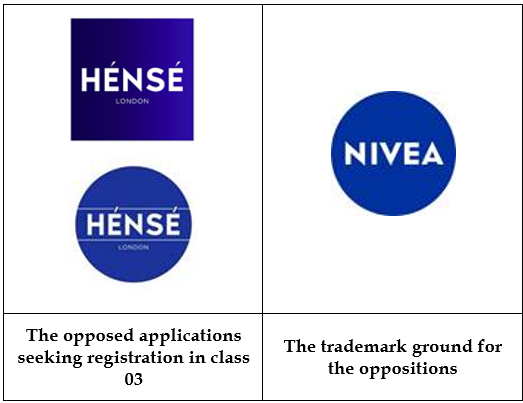- with readers working within the Property industries
- within Transport and Insurance topic(s)
In the cosmetics sector, logos play a crucial role considering that consumers pay close attention to brand image, but they act quickly when buying products. Visual appearance often shapes purchasing decisions more than the verbal elements of a trademark. Decisions of Turkish Patent and Trademark Office ("the Office") accepting the similarity between the trademarks discussed below provide a compelling case study of how overall perception and conceptual similarity between the trademarks prevail over differences in word elements in the evaluation of likelihood of confusion.
In this context, the Office's approach illustrates that even when trademarks are composed of distinct verbal elements, there may be a likelihood of confusion, when they are evaluated as a whole, considering common visual elements bringing the trademarks closer to each other.

The Office rendered decisions upon BEIERSDORF AG's oppositions against the applications cited above covering the goods in class 03 which are directly related to the goods covered by BEIERDORF AG's "NIVEA" trademarks and field of activity.
As known, "NIVEA" is one of the worldwide well-known trademarks in cosmetic industry and the blue-white combination within a circle device have become instantly recognizable across generations of consumers. On the other hand, the applications at issue, include "HENSE" phrase in bold and "LONDON" phrase in smaller font, white on both blue circular and square backgrounds. It may be though that "HENSE" is the essential element in these applications and as it is not similar to "NIVEA", there will be no likelihood of confusion. However, despite the differences between the trademarks regarding their word elements, the overall impression became a game changer in these matters.
The Office accepted the existence of a likelihood of confusion and as the Office's decisions do not include detailed assessments, we assume that the Office considered that the conceptual similarity is sufficient to establish a connection in the mind of average consumers in terms of goods in class 03. The Office appears to have adopted a consumer-based viewpoint, considering that average consumers generally recognize trademarks not only by their names, but also by their visual components, especially in the cosmetics sector where brand image has a significant influence in purchasing behavior. This suggests that even when word elements differ, common design and composition identity can give a rise to likelihood of confusion, particularly where the earlier mark enjoys a strong reputation based on those common elements. We believe that the recognizable trade dress and well-known status of NIVEA significantly increased the risk that consumers would perceive a connection between the trademarks.
These recent decisions show that in the assessment of likelihood of confusion, the overall perception of a trademark—driven by visual presentation and conceptual similarity—can outweigh the differences in verbal elements.
Therefore, it should be noted that these decisions reinforce the importance of protecting not only word marks but also the visual components of the marks and the prospective applicants should be aware that even without using a similar word, similar composition to an earlier well-known trademark may still result in refusal based on likelihood of confusion. Also, these decisions highlight the strength of well-known trademarks and the importance of overall evaluation in the opposition proceedings.
The content of this article is intended to provide a general guide to the subject matter. Specialist advice should be sought about your specific circumstances.




